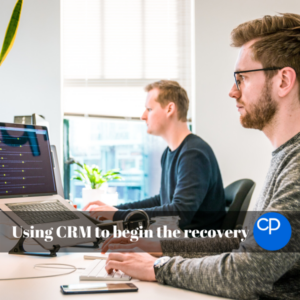 In the UK, the government continues to update its advice on Coronavirus (https://www.gov.uk/coronavirus). Currently, for many, the advice remains to work from home where possible. As this guidance changes, and offices and factories reopen many businesses will be wondering how to rebuild sales pipelines impacted by months of lockdown. CRM should come into its own and help as you identify and close the opportunities that will begin the recovery.
In the UK, the government continues to update its advice on Coronavirus (https://www.gov.uk/coronavirus). Currently, for many, the advice remains to work from home where possible. As this guidance changes, and offices and factories reopen many businesses will be wondering how to rebuild sales pipelines impacted by months of lockdown. CRM should come into its own and help as you identify and close the opportunities that will begin the recovery.
Acquire, Retain and Develop
CRM systems should include the basic data you need to rebuild your business. From lists of prospective customers to details on existing clients and their requirements, CRM should be your “go-to” tool for managing all customer relationships. However, data on its own will not drive the recovery. The challenge for CRM managers will be to put that data to use and build trust throughout the customers buying journey. More than ever, CRM needs to convert Insight into Actionable Insight.
While in the past many users have seen CRM as a “big brother” tracking and reporting on sales activity, the need now is for CRM to inform activity. With sales and marketing budgets under pressure, and many buyers keeping a close eye on the purse strings CRM needs to identify the best quality prospects. In this case, quality needs to include not just means, authority and need, but also opportunities to cross-sell and up-sell. What’s more, it needs to do this in a way that helps salespeople begin conversations at a time when buyers may be reluctant to consider new proposals.
Provide what people want to buy
One of the simplest ways to improve your close ratio, and increase sales, is to identify companies whose challenges your product or service can address. Using the data in your CRM system it should be possible to build lists of organisations, with similar requirements to your existing customers. Whether this is based on their industry, or geographic location, the raw data should be easy to identify. Armed with this list of targets, the challenge is to narrow down to a list of key contacts who understand their needs and are happy to be introduced to your offer.
Tools such as LinkedIn and careful searching of the clients’ website help with these tasks. For those whose offer is best targeted at board directors, Companies House is an invaluable source of contact details. Beyond these sources, trade publications and professional bodies are normally excellent sources. As I often tell my own sales team, when all else fails asking current customers and even other suppliers to your target industry can often yield valuable contacts.
Stop selling, start helping others to buy
One of the most quoted names in Sales training for many years was Dale Carnegie. His books and lectures have inspired generations of salespeople to success. In a post coronavirus world, perhaps one of his most powerful messages is:-
“You can make more friends in two months by becoming interested in other people than you can in two years by trying to get other people interested in you.”
In previous blogs, I have nailed my colours to the mast when it comes to driving any business recovery. I am convinced that more than ever buyers do not want to be “sold at.” What they want, and need is help to address business issues. What has become increasingly clear is that many of the issues we used to assume were common to our ideal customers, have changed in the post coronavirus world. More than ever we need to ASK PROSPECTS what challenges they are focussed on addressing, and what does their business currently NEED.
If your pitch is based on your own perception of the client’s needs, as opposed to theirs, be prepared for frequent rejection.
How to ask questions – at scale.
Unsurprisingly, CRM has an important role to play. The ability to use a target list to send survey questions to prospects and collate responses into hot warm and cooler lists is essential to scale your business development activities. Increasingly marketing teams have used tools like Survey Monkey or Survey Mechanics to ask prospects for information. Unless these tools are integrated into your CRM data, you risk creating another data silo that will slow down your sales team. For our own clients who use Maximizer CRM, there is a link to Survey Mechanics.
Creating a survey in these tools is simple and easy. Where many have struggled is in structuring the questions to encourage survey completion. In the B2C world, most of us will have seen offers for discount codes or free product, in return for completing a survey. In the B2B space, very few of our target audience will have the time or inclination to complete an overly long survey for a minimal reward. Best practice suggests that short surveys, that communicate information of value to the respondent as they complete the survey, product better results. For that reason tools that allow you to structure the survey with branch logic, that provides information related to previous answers are significantly better than static surveys.
With the information gathered and stored in your CRM system, your sales team are now able to prepare their calls to highlight exactly how the prospects’ challenges are addressed by their product or service. Those prospects whose challenges are not met can be nurtured in a different way. The result will be a growing recognition that your company is respectful of buyers’ time, and consistently delivers solutions to business issues.




